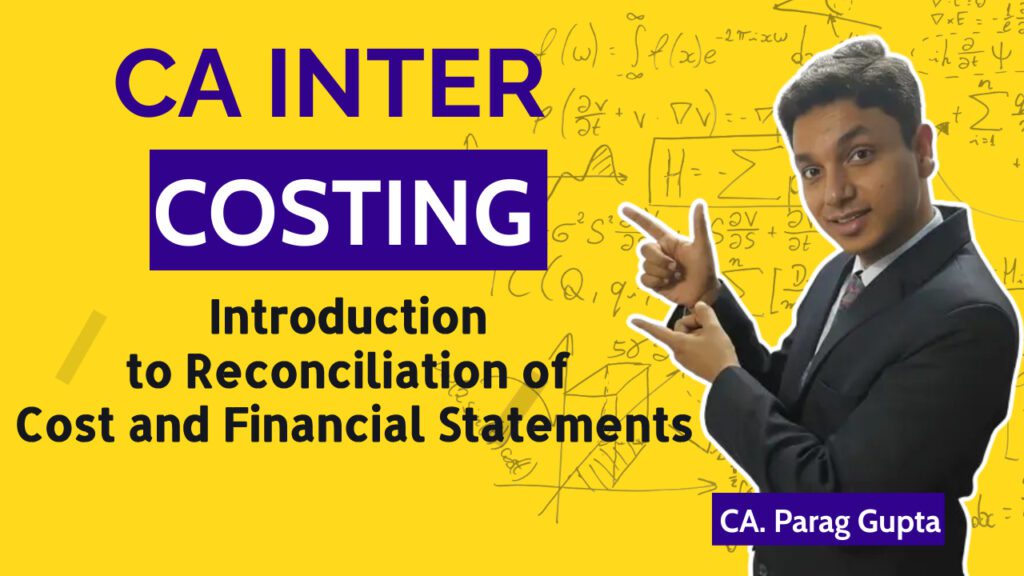What is Reconciliation of cost & Financial Accounts?
Reconciliation of cost and financial statements is a critical aspect of financial accounting. It involves aligning the cost records with the financial statements to ensure accuracy and consistency. This process enables businesses to identify discrepancies, rectify errors, and present a clear financial picture to stakeholders.
Importance of Reconciliation in Financial Accounting

Ensuring Accuracy in Financial Reporting
Reconciliation ensures that the cost records and financial statements reflect the same financial transactions. This accuracy is vital for compliance with accounting standards and regulations. It helps in building trust among investors, creditors, and other stakeholders.
Identifying Discrepancies and Errors
By reconciling cost and financial statements, businesses can quickly identify discrepancies and errors. Whether it’s a simple data entry mistake or a more complex accounting error, reconciliation helps in rectifying these issues promptly.
Enhancing Decision-Making
Accurate and consistent financial data provided by reconciliation aids businesses in making informed decisions. It provides a clear understanding of costs, revenues, and profitability, enabling better strategic planning and resource allocation.

Steps to Reconcile Cost and Financial Statements
Gather Relevant Data
The first step in reconciliation is to gather all relevant cost records and financial statements. This includes invoices, receipts, bank statements, and general ledger entries.
Compare and Analyze Data
Next, compare the cost records with the financial statements line by line. Analyze the differences and identify any discrepancies or errors.
Make Adjustments
Once discrepancies are identified, make the necessary adjustments to align the cost records with the financial statements. This may involve correcting errors, updating records, or reallocating costs.
Document the Reconciliation Process
It’s essential to document the reconciliation process, including the steps taken, adjustments made, and reasons for discrepancies. This documentation serves as a reference for future reconciliations and audits.
Best Practices for Effective Reconciliation
Regular Reconciliation
Performing reconciliation regularly, such as monthly or quarterly, helps in maintaining accuracy and consistency in financial reporting.
Utilize Automated Tools
Use of automated reconciliation tools can streamline the process, reduce manual errors, and save time. These tools can automatically match transactions, highlight discrepancies, and generate reconciliation reports.
Review and Approval
Always have a review and approval process in place to ensure the accuracy and integrity of the reconciliation process. This involves having a second set of eyes to verify the reconciliation and approve the adjustments made.
Conclusion
Reconciliation of cost and financial statements is a crucial process that ensures accuracy, consistency, and transparency in financial reporting. By following the steps mentioned above and implementing best practices, businesses can master the reconciliation process and present a clear and reliable financial picture to stakeholders.
Implementing these strategies not only enhances the credibility of financial statements but also supports informed decision-making and strategic planning. Therefore, mastering the reconciliation of cost and financial statements is essential for the financial health and success of any business.
FAQ’S
You can manage to clear CA inter exams through self-study. To do that, you will need a solid routine and strict discipline to stick to it. While ICAI material, previous years’ papers, and RTP are good enough, most students benefit from specialized CA inter coaching classes, especially the mock tests.
Purpose: The process of reconciliation ensures the accuracy and validity of financial information. Also, a proper reconciliation process ensures that unauthorized changes have not occurred to transactions during processing.
This will vary depending on when you start your CA intermediate preparations, but anywhere from 8 to 12 hours (or more) per day on average is required to crack the CA inter exams.
Advanced accounting in CA Inter exams is the easiest subject that can be easily passed and you can also score well just by following a few instructions that we are offering now.
Want to subscribe to latest lectures by Parag Gupta sir?



